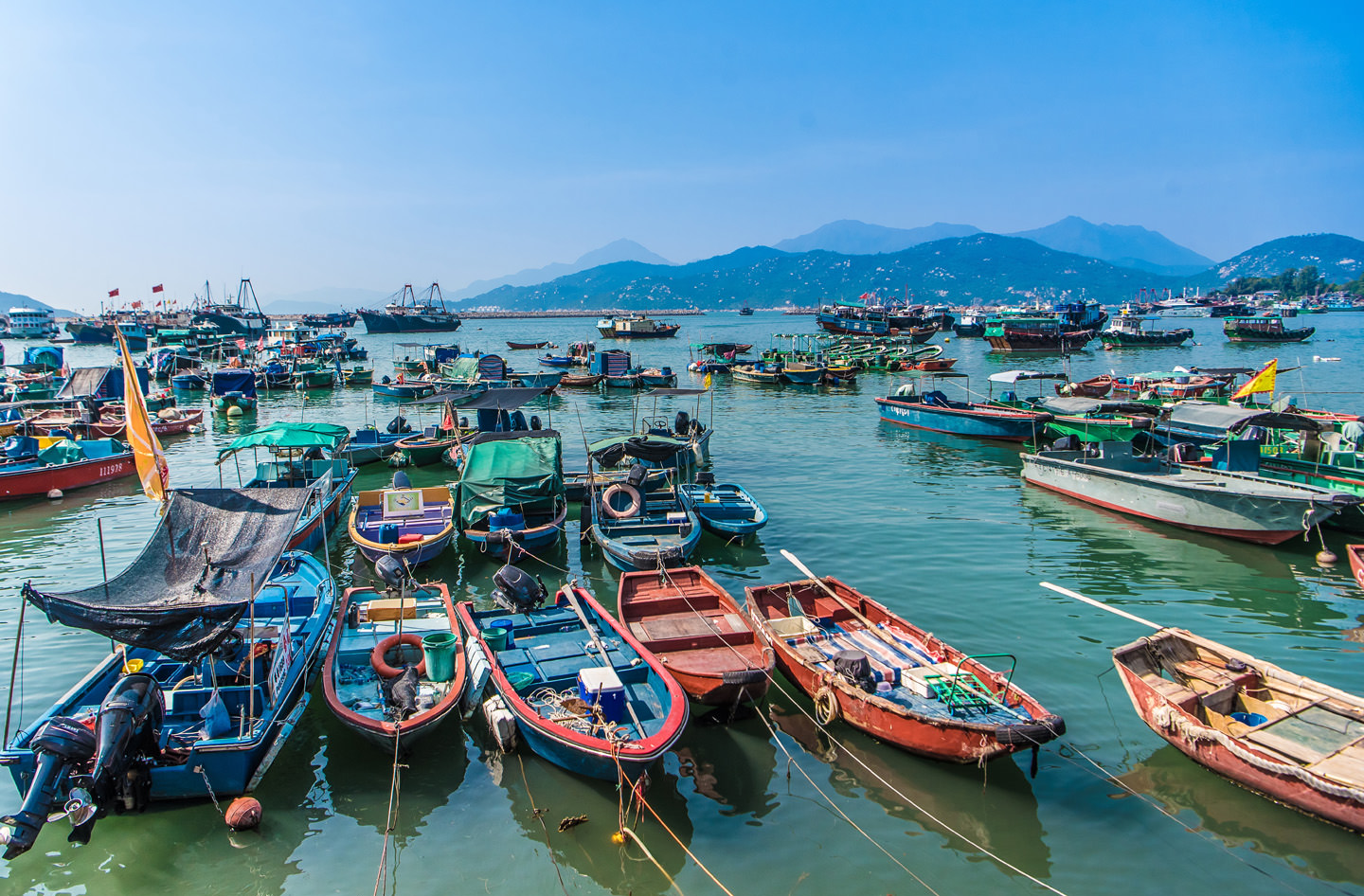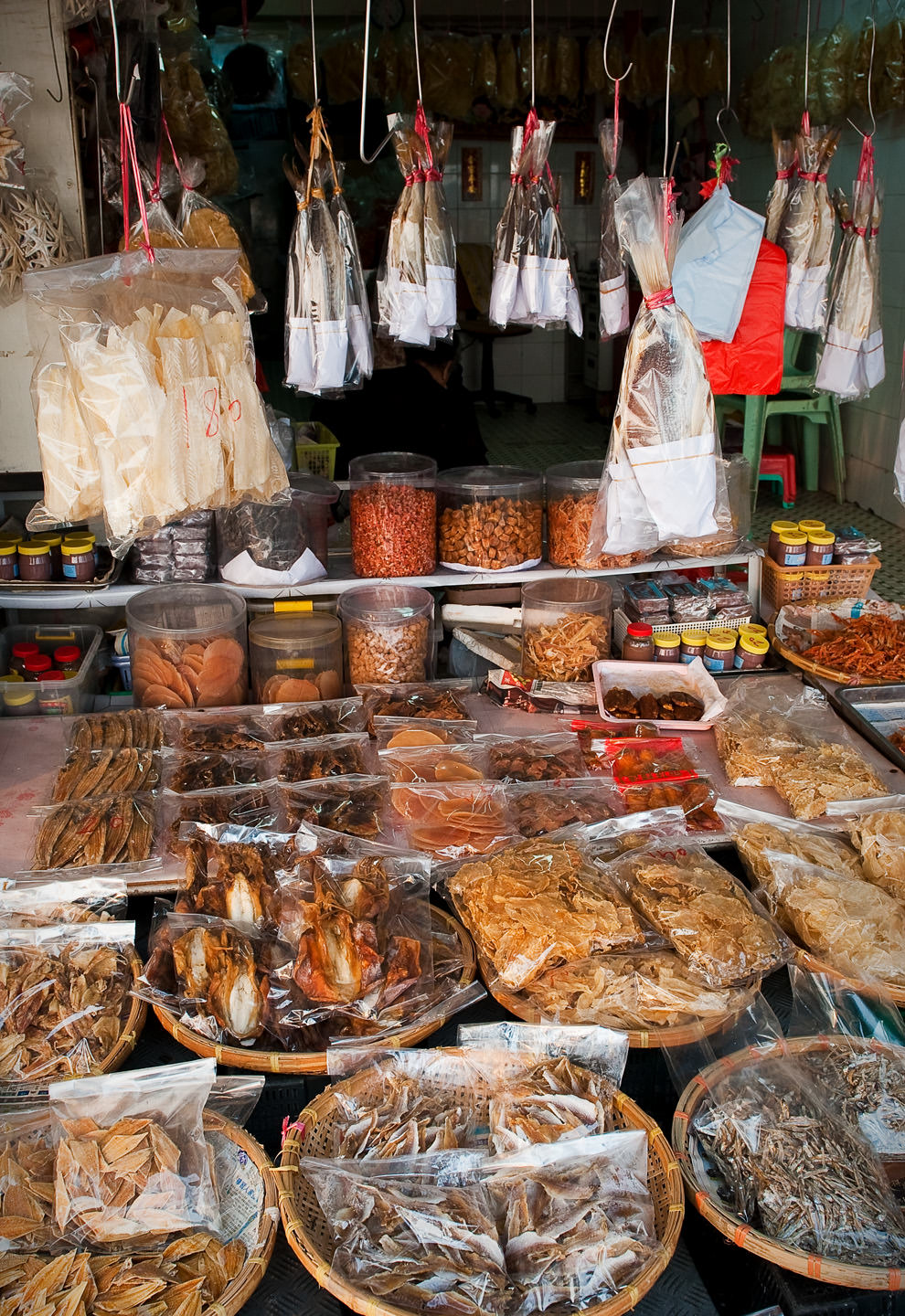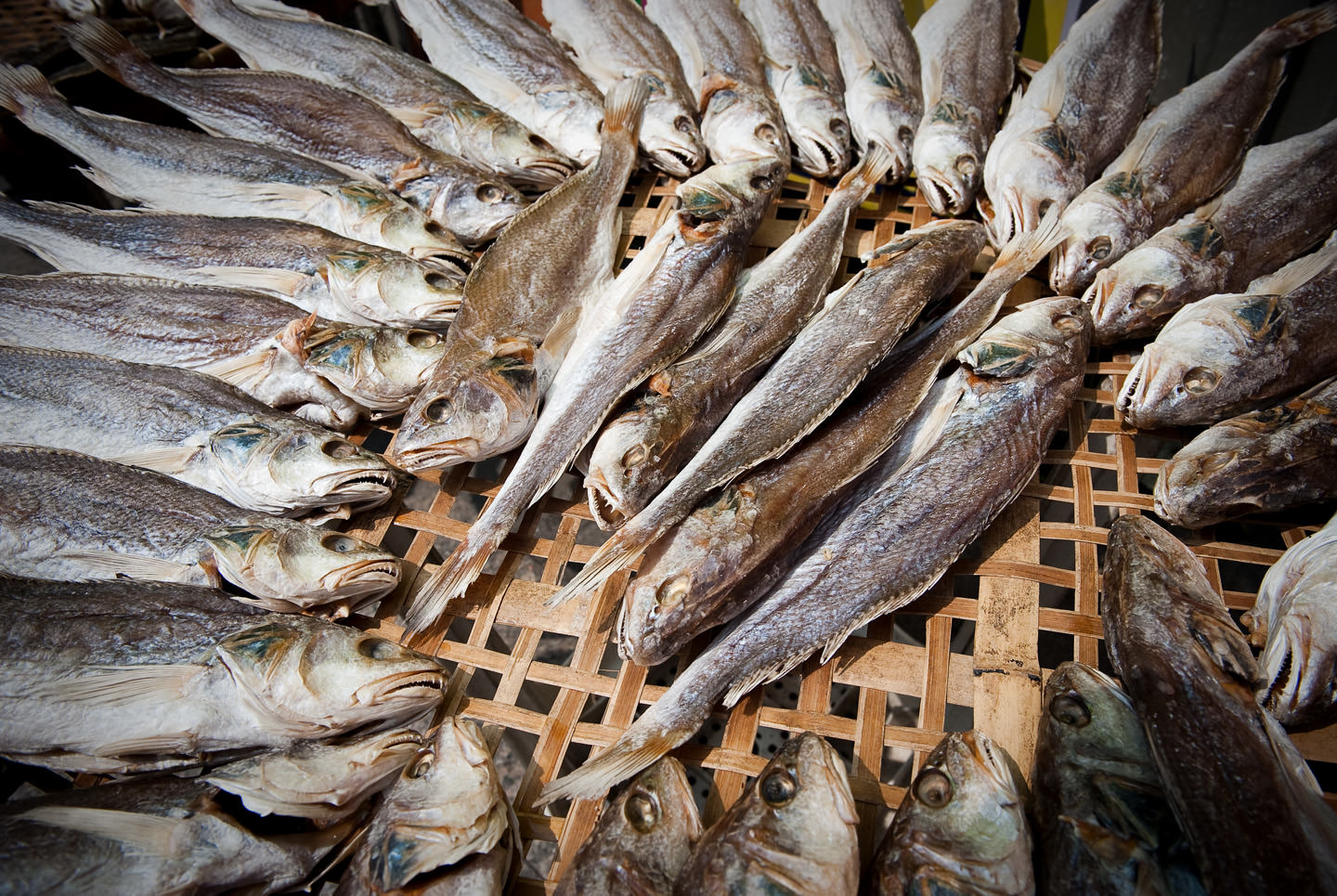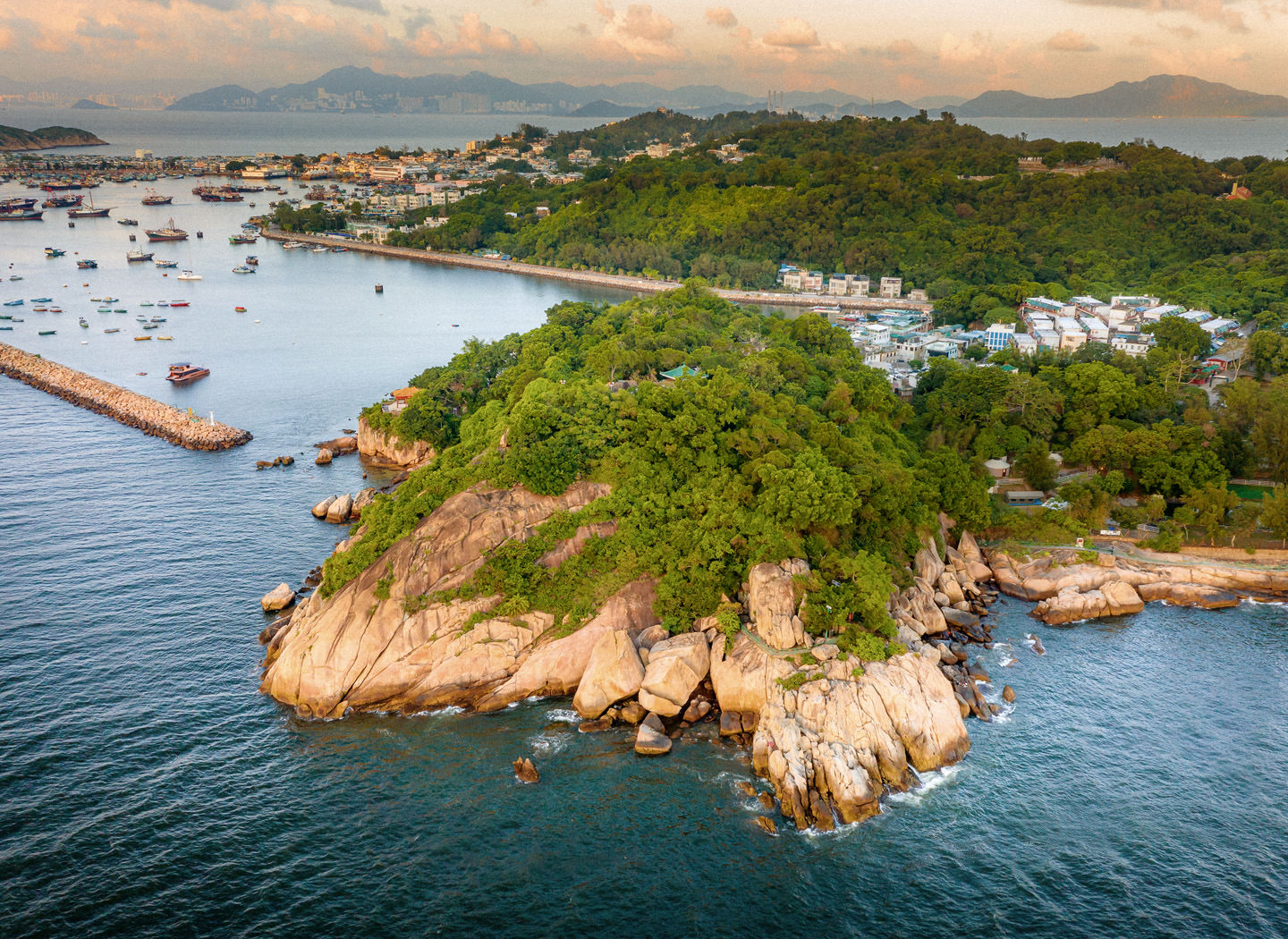Handed an unassuming palm-sized parcel of soft, white rice cake, it’s hard to imagine what all the fuss is about. But all it takes is one bite and I completely understand. The freshly made mochi dough has been stretched thinly over a lobe of the sweetest mango, perfectly ripe, heady with perfume. It’s a revelation, and worth every step of the journey it took to experience.
I’m on Cheung Chau, a dumbbell-shaped outlying island of Hong Kong with a population of 20,000 and a mere 35-minute fast-ferry ride from the metropolis. It may only be 10 kilometres away, but it’s a world apart from its densely populated, highrise, cosmopolitan neighbour. For a start, there are no cars on Cheung Chau, save for a few necessary vehicles—emergency services and construction—made impossibly thin to navigate the island’s warren of narrow streets.
The sleepy island vibe is punctuated by bursts of colour—doors and buildings painted the colours of sunshine and clear skies: teal, orange, pink. Wide, shallow baskets are filled with tangerine peels left outside to dry in the sun, as are others holding multiple varieties of fish, many wearing paper face masks—an ingenious ploy to ward off flies that would otherwise feast on the eyes. Inside the bustling fish market, tanks of live crabs and mantis shrimp sit next to tables covered in ice displaying today’s vibrant catch.

Fishing has been the mainstay of the island since early inhabitants took residence, some living on junks. Many were fishermen who worshipped Pak Tai, the Taoist god of the sea, and, the legend goes, after an outbreak of plague on Cheung Chau in 1777, an image of the deity was brought to the island, its presence enough to eradicate the disease. Yuk Hui Temple, now a Grade 1 historic building, was completed in 1783 to honour Pak Tai, and its continued importance is evidenced by the consistent rounds of repairs and renovations made over centuries.
The plaza in front of the temple is also home to Cheung Chau’s famous Bun Festival, a Taoist celebration that sees the island turn vegetarian for the majority of the festivities. A cultural affair that usually takes place in May, when the Buddha’s birthday is celebrated, it involves the construction of three bun towers (tall structures traditionally built from bamboo and covered in steamed sticky buns) that young men would race up—the higher up the bun they snatched, the greater the good fortune. The contest was suspended in 1978 after a tower collapsed, causing mass casualties, but since its reintroduction with greater safety controls in 2005, it’s become a major attraction for visitors. Its popularity outside the island speaks to a broader change: although fishing remains central to life here, Cheung Chau is evolving into an increasingly important tourist destination that sees day-trippers and weekenders arrive to enjoy the quieter pace and excellent dining options.
Open storefronts crammed with dried foods—tiny shrimps, bok choy turned brown and leathery and ready for double-boiled soup, loofah-sized fish maw (swim bladder)—butt up to more modern counterparts, the smart cafés and gift shops owned and run by newcomers.
You can hardly walk 10 feet without encountering the latter. Popular street stands offer traditional snacks, including giant fish balls: golf ball-sized globes of spongy steamed fish paste dipped in curry sauce and served on sticks. Closer to one of the island’s sandy beaches (with its clearly identifiable net to keep sharks away), another makeshift stand in front of a tiny store serves up glutinous steamed rice cakes stuffed with turnip or red bean paste and thick slices of set egg custard to refuel swimmers after a dip.

Cheung Chau culture centres on the sea, from the importance of the fishing industry to day-trippers enjoying the quiet pace and excellent dining.
Open storefronts crammed with dried foods—tiny shrimps, bok choy turned brown and leathery and ready for double-boiled soup, loofah-sized fish maw (swim bladder)—butt up to more modern counterparts, the smart cafés and gift shops owned and run by newcomers, younger Hong Kongers looking for a simpler life. In amongst this appealing jumble of old and new, everyday supplies and tourist trinkets, sits Wan Sing Dessert, the tiny, unprepossessing spot where I gobble down that transformative mango mochi.
Squishing around a tiny table with a gaggle of high-schoolers on lunch break, it’s clear that in this restaurant, mango is king, served as cheung fun (rice noodle rolls), in smoothies or in bowls of cold soup with sago, or chopped up and spooned over cubes of dark brown herbal grass jelly. It’s all good—yes, we order one of everything—but nothing can outdo the mochi.
By lunchtime, foot traffic is all headed to a short stretch of waterfront where a row of seafood restaurants face dozens of fishing boats done work for the day. Large round tables covered in plastic cloths hold vast platters of the sea’s bounty next to plastic jugs of hot tea and bottles of cold beer. Huge scallops steamed in the shell are dressed with soy sauce and vermicelli noodles, razor clams are tossed in chili and black bean sauce, their noodle-length flesh toothsome but not remotely chewy. Sweet shrimp glazed in a gentle garlic sauce sit atop a bed of broccoli, and a whole, steamed grouper looks and tastes like it was swimming mere moments before it was served. “You know best!” I look up and smile. Someone has seen me carefully prising out the fish cheek with my chopsticks.
Then there’s the typhoon shelter crab—a foot-high jumble of claws, legs, and body shells deep fried in a mountain of breadcrumbs, garlic, fermented black beans, and chili that makes the plastic table covering a prudent choice. The dish originated in the 1960s, when it was cooked by fishermen who lived with their families on boats moored in Hong Kong’s typhoon shelters. With no refrigeration available, the catch was cooked with pantry staples that could survive in the heat. The communities gradually moved to land-based housing, but the dish remains as a reminder of different times—and brings a welcome blast of heat onto the usually more subtle Cantonese cuisine.

The table behind us is filled with happy-faced seniors, sharing many of the same dishes as us. Across from them, another table is seated with men, and the food being brought to their table is completely different. A huge bowl of simply steamed shell-on shrimp is followed by a platter of small fish, all being washed down with beer.
The men look on approvingly as we dig into our meal. As they should: these are the fishermen who caught it, what’s left of their catch cooked for them by their restaurant clients. As we walk back along the waterfront to catch the ferry to Hong Kong, I notice the same scene of feasting fisherman at each restaurant.
It’s a simple and smart system—take care of the fishermen, and the fishermen will take care of you. Pak Tai would surely approve.
Read more from our Winter 2024 issue. Cathay Pacific flies direct from Vancouver to Hong Kong twice daily. Three more flights per week will be added to the route in April.









